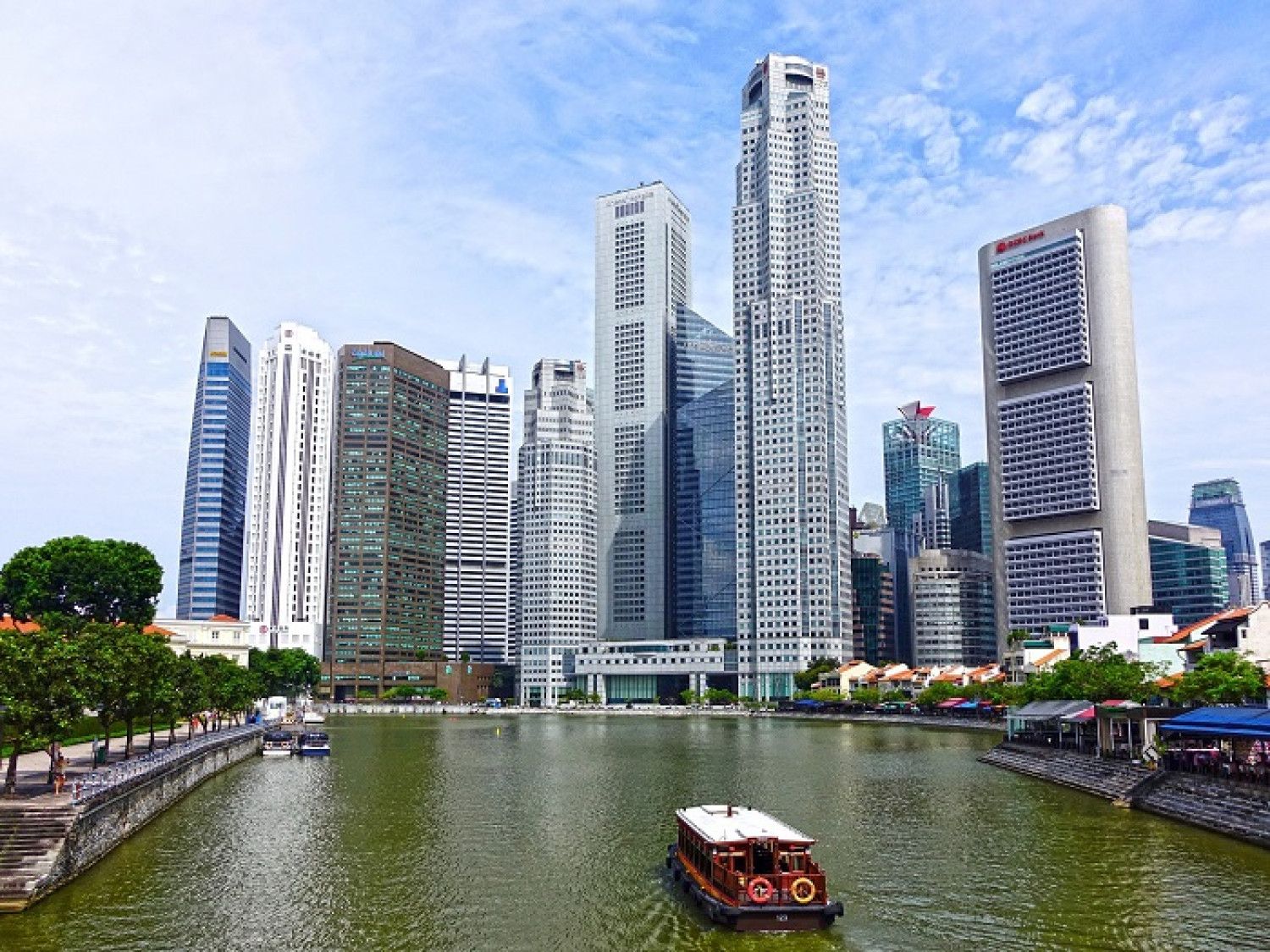Mixed prospects for Singapore property market
By Timothy Tay
/ EdgeProp |

The property cooling measures in July last year had a greater impact than five years earlier when the total debt servicing ratio (TDSR) loan framework came into effect in June 2013, says Alan Cheong, senior director and head of research for Savills Singapore. “By end 4Q2018, private home prices were down 4%, compared to 2% in 4Q2013.”
Cheong was speaking on the residential market at the annual Built Environment and Property Prospects Seminar, jointly organised by the Building and Construction Authority (BCA) and the Real Estate Developers Association of Singapore (REDAS) on Jan 14.

From left: Lee Nai Jia, head of research Knight Frank Singapore; Alan Cheong, head of research and consultancy
Savills Singapore; Regina Lim, head of capital markets research Southeast Asia JLL; Mark Lampard, head of regional
tenant representation Cushman & Wakefield; Boaz Boon, director of real estate advisory VestAsia Group (Picture: BCA/REDAS)
tenant representation Cushman & Wakefield; Boaz Boon, director of real estate advisory VestAsia Group (Picture: BCA/REDAS)
“The luxury market was relatively less affected by the cooling measures, as foreign buyers now see the higher ABSD [additional buyer’s stamp duty] as part of the entry price for a good valued investment in a stable market,” says Regina Lim, JLL’s head of capital markets research for Southeast Asia. More foreign buyers are picking up bigger ticket properties in the $7 million to $10 million range — a sign that they are buying for their own use, she adds, unlike in the past, when they purchased smaller units as investment properties.
Advertisement
About 60 new projects yielding 20,000 new units are in the pipeline for launch this year. However, 47% of the units are from six developments with over 1,000 units each, notes Savills’ Cheong.
Developers have to be “very tactical and strategic”, especially those who had purchased a lot of land over the last two years, says JLL’s Lim. “We are expecting annual demand to be about 8,000 units,” she adds. “But based on the sites that developers have bought, they would need to sell more than 8,000 units a year over the next five years.”
The government’s change in minimum average unit size from 70 sq m to 85 sq m for non-Central Areas announced last October, will mean that developers will have to “suffer some price psf decline if they do not want to push up the ticket price of the units,” she adds.
However, demand for private homes may not fall off as steeply, observes Savills’ Cheong. “Those who started work in the 1970s to 1990s have acquired enough wealth over the past decade,” he says. “They are now using their savings to help their children buy property.”
Office market
In Singapore, the penetration of flexible workspace is expected to grow from 3% to 4% today, to about 10% to 15% of the total office stock by 2025, says JLL’s Lim.
“The outlook for the segment is promising for the next two to three years,” says Lee Nai Jia, head of research at Knight Frank Singapore. Given the current economic uncertainty, “firms looking to expand will first consider co-working arrangements, while waiting for the right moment to re-enter into a more traditional lease arrangement”, he adds.
Advertisement
Technology firms now take up a quarter of the total office space in Singapore compared to about 8% four years ago, and space for financial services firms has fallen from 47% to 23% over the same period, says JLL’s Lim.
Overall vacancy rates in the central business district are less than 4%, says Mark Lampard, head of regional tenant representation at Cushman & Wakefield (C&W). Grade-A office rents are expected to increase by 8% to 10% over the next few years on the back of limited new supply in the CBD, he adds.
“In most commercial markets, it’s demand that drives the market place,” adds Lampard. “In Singapore, it’s supply-led.” The Singapore office market has seen an addition of one million sq ft of new office space every year. And it’s the “trophy buildings” that drive rents, he adds.
He expects that the rush to fill these new “trophy buildings” will cause prime commercial rents in the CBD to increase by 20% to 25% over the next few years, says Lampard.
Greater workplace flexibility
However, occupiers today are unprepared to stomach such dramatic increase in costs and they are changing their workplace strategies to allow more employees to work remotely. They are also adapting flexible workspaces, and finding alternative high-quality commercial spaces in city-fringe locations like Paya Lebar Quarter, says Lampard. Others are also considering outsourcing more operations offshore to countries like India, he adds.
“Over the next 12 months, the focus will be on building more flexible spaces,” says JLL’s Lim. “Co-working operators and more importantly, landlords and developers are thinking of what tenants want, which is more flexibility.”
Advertisement
Meanwhile, investor interest will be in alternative assets such as data centres, self-storage, student housing, aged care, nursing homes and even co-living, which are outperforming traditional residential sector, Lim adds.
https://www.edgeprop.sg/property-news/mixed-prospects-singapore-property-market


Follow Us
Follow our channels to receive property news updates 24/7 round the clock.
Subscribe to our newsletter
Advertisement
Advertisement
Advertisement
Top Articles
Search Articles